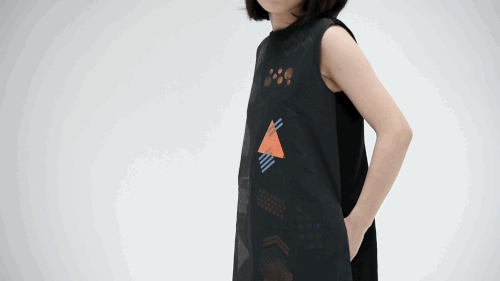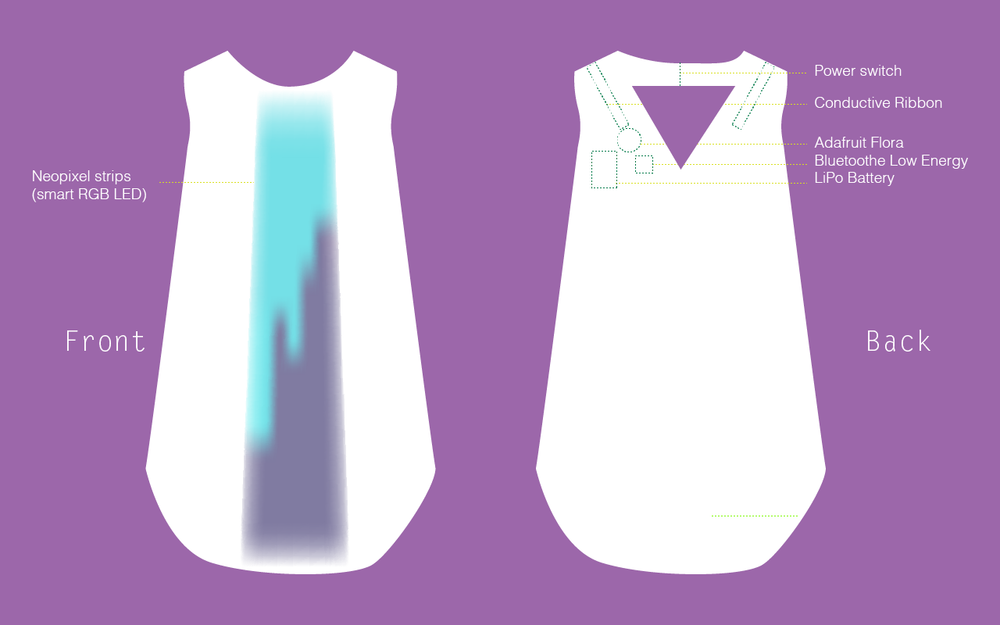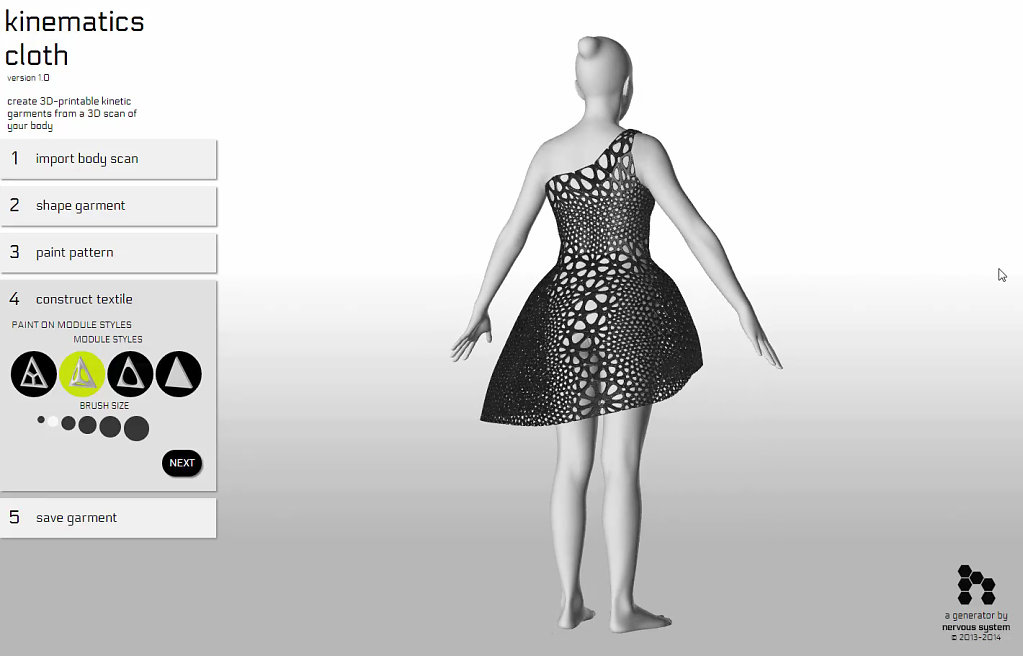11. mechanical design, machine design
📆 2020 - December 1st to 8th
What I presented this week
A possible idea for a project:
How did I get there?
This week, we had to find an idea for a project: our final 3-month project, but ideally something that would be carried on after this period of time.
This is something I was having trouble thinking about since the beginning of Fabricademy, because each week was quite intensely focused on a particular subject. So I really took this week as an opportunity to breathe and look back at these past months and everything I learned.
Looking back
I went back to these past few weeks, and rounded up all the projects that I had found inspiring. There were a lot of them, but I was starting to have a clearer view of what I wanted to do.
Among them, the Dandelion painting by Jie Qi, the learning toolkit Shirt Circuit by Clement Zheng, the neuroknitting experiments by Varvara & Mar, the Oiko-nomic threads project by Afroditi Psarra...
Discovered more recently in the topics of wearables and data, I liked basically everything made by the company Wearable Media, and also everything made by Jingwen Zhu (especially her "Heart on my dress" data experiment, and her customizable white dress):
I was also amazed by some projects involving parametric design, for example by Nervous Systems, or the Be-Tween project by Pauline Van Dongen.
Mapping topics and actions
From there, I tried to find which themes I was most drawn to:

Trying to put what's in my brain on paper, so that it can think properly
- create?
- transmit?
- research?
- produce?
- learn something?
- ...?
Defining a first set of ideas
My first ideas were divided in two categories:
Soft circuits
I thought of doing pieces of e-textile art, that people could customize and order. For example, something with constellations, like the sweatshirt I did in the e-textiles week.
Or maybe exploring the idea I had to do musical embroidery, with fabric speakers embedded in the embroidery design, and a microcontroller connected to Spotify.

This would mean starting with tech research on how to do this in a way that would be both esthetic and functional. A first step could be to exhibit some of these pieces, and then have some custom-made?
I'm also drawn to the idea to make workshops out of this, to teach people what they can do with e-textile. Workshops, and maybe DIY kits?
Data-generated textile art
My other strand of proposals came from the initial idea to use data as a source, and materialize it in some way. I had started using data as an input for parametric design during the computational couture week, and I would really like to go further with this.

Climate Stripes data used in Grasshopper
There is the question of which kind of data to use:
- big data, public data: climate change issues, for example showing the impact of the textile industry through textile objects;
- personal data: my personal information, but also the immaterial data I create, like photos, chats, etc.
- body data: data I can collect from a body, manually or with sensors, like sleep patterns, heart rate, etc.
Showing big data in a materialized object is very interesting, and informative. But personal data can be personalized for everyone, and creates in my opinion a more "emotional" object.
Setting a direction
The project idea I arrived to after this is called "Data Threads", and it is an exploration on how to materialize intimate data through textile objects.
Here I will detail a bit more what I talk about in the slides that are at the top of this page.

We produce A LOT of data, whether consciously or not. The photos we take (and store on our phones or social media accounts), chatting with other people, everyday-life data we might choose to track (like our mood, or sleep patterns)... All this data exists, and we don't always pause to look at it this way, but it is a part of us.
However, most of it is immaterial, and immaterial data does not last. Devices break, apps and social media come and go, and when they go, they usually go away with your data. This is problematic for a good number of reasons, but the one I’m looking at right now is really memories, and data I care about in an emotional way.

Here are two examples of this kind of data physicalization I like very much: Seung Lee knitted a sleep blanket with his son’s sleep patterns on it, that he had tracked with an app for one year. Jingwen Zhu created this dress based on her personal journal app. The colours and patterns change accordingly to what she wrote that day, with the help of electronics and thermochromic inks.
To me, both of these projects bring data to the tactile world, into everyday objects that make sense to their creators, and that are linked to the data they represent.

On a more concrete level, here is how I plan to create a design that’s based on data.
- The first step is processing, and formatting the data in a way that it can be usable. I also need to define a set of rules, parameters for the design. What will be the constraints for this particular design, how do I want to represent each part of the data?
- With this defined, I can use Grasshopper, or Processing, or any other parametric software or language, to create the design and play with the parameters;
- For the fabrication step, I want to use everything I learned in Fabricademy regarding machines and digital fabrication (embroidery machine, knitting machine, laser cutting), but also in the philosophy: trying to make these objects long-lasting, and sustainable (natural inks, recycled materials).

Here are two examples of these personal objects, two ideas I want to play with :
- Love Letters is a knitted scarf, on which the pattern is generated from a series of love messages. The colours and lines would correspond to the quantity of messages exchanged, their frequency and simultaneity. You can then wrap yourself in this scarf, and loving memories.
- Mood radio is a decorative embroidery piece, representing the genres of music I listen to, with colours chosen according to the mood I’m in when I like to listen to this music. This one is thought as an interactive piece: It would be connected to the Spotify API, and clicking on each colour would play an artist in this genre at random.

I would like to start exploring the data in my life to create such objects, in an artistic and poetic approach.
This would mean first making choices: which specific data I want to use, and in which way I want to make it physical, through which object. I will the go back and forth between this and prototyping and testing the different parameters and fabrication methods. Some of the design I imagine making will require me to learn how to use new machines, like the hacked knitting machine for example.
As future steps, I imagine having this kind of objects custom-made for people, or even make tutorials so that people could learn how to make them themselves with their own data, as a way to reclaim them in the physical world.
Review
- Oscar: You should explore further the different modalities and properties of fabric: softness, thickness, compression, texture... The materialization of the data can be more than visual.
- Anastasia: Check the amazing work of Kyle McDonald, most of his work is open source. Explore textures, colors, try to create a LANGUAGE, a vocabulary, mapping the physical and the emotional.
- Claudia: Since you are planning to exhibit you artwork.. Have you thought of something that could happen in real time and involve the users as well? If you are into knitting, also AYAB could help you shape your memories







